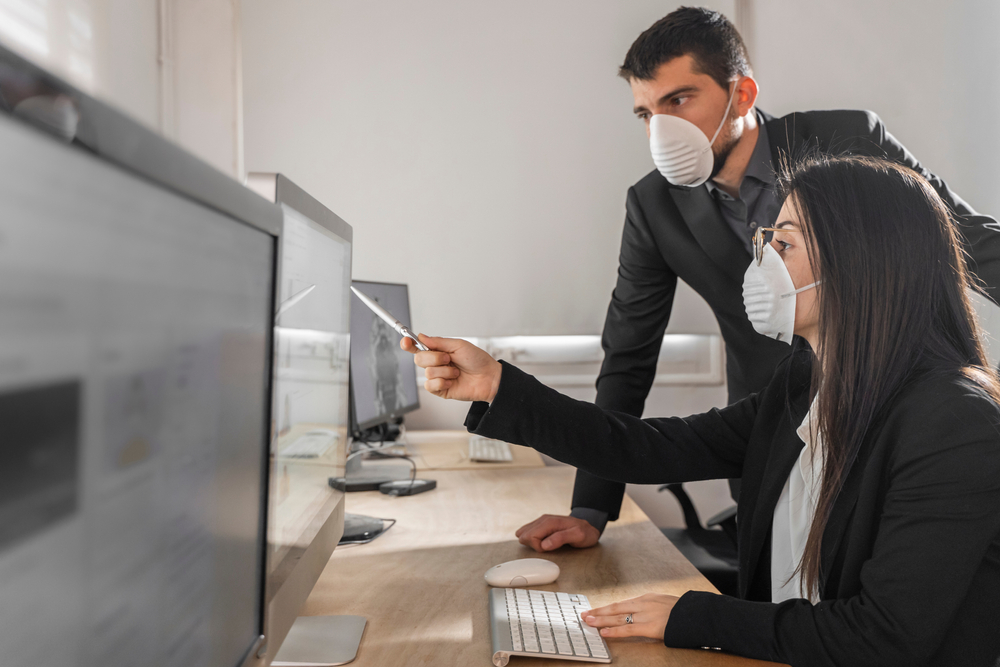Over the past couple of months, everything has changed. Many of these changes will have ongoing impacts on our industry. As we begin to see MSPs look toward the future, it’s time to take a look at the state of the union, particularly where things stand with technology, communication, and the workforce structure of the future.
Shifts in Communication
A popular meme at the beginning of this pandemic said, “we’ll now see which meetings really could be emails.” While we have seen our clients tighten up their communication by shifting to chat platforms like Teams, we’ve noticed an even greater shift toward video communication. In fact, webcams flew off the shelves so quickly that some are still back-ordered. More practical video conferencing ushered in new etiquette expectations for surviving the new workplace, and we expect continued heavy use of video conferencing moving forward. Many offices have seen it as a much more efficient, yet personable way to gather employees together, see their smiling faces, and check-in on both a personal and productivity level. We highly recommend gathering with your remote teams on video chat daily. Twice a day if possible. Even as people return to the office, maintain these meetings to sustain connections, particularly if you have a hybrid workforce with some in the office and some remote.
A Note on Web Cams
Webcams are a fantastic lens into your employees’ and clients’ worlds; however, hackers also love to access webcams. They’ll install a backdoor virus on your system through social engineering, a link you clicked, or they could be phishing for information, then use the stolen info to turn on a webcam without the user’s permission or knowledge.
We recommend that our clients limit the platforms that have permission to utilize their webcam, as well as utilizing a webcam cover when they’re not actively on camera (a sticky note or opaque tape will even work in a pinch). Some other safety guidelines are:
- Make sure the latest update is installed.
- Use Strong Passwords, and change them regularly.
- Utilize two-factor authentication if available.
- Make sure employees are trained to look for Phishing and other security scams.
Bringing up these issues to our clients may open the door to other help they may need internally.
Rising Safety Concerns
Nefarious hackers are taking advantage of the confusion, frustration, and fear surrounding COVID-19. Social engineering attempts are on the rise as they use COVID-19 related “news” to lure people into giving up their information. People working from home traditionally don’t have enterprise-grade firewalls and anti-virus protection. If employees continue to work from home during and post-pandemic, it’s up to us to insure their security is up to date.
We also need to consider where the pandemic ranks on our disaster-preparedness planning. Before this event, we hadn’t considered what would happen if we had to scramble to assist our clients get their employees working remotely. Or how they could keep their businesses operational in a curbside pick-up-only world. Now’s the time to make sure we document the steps we took to get this done. Write down what you did well this time, and what you would change should something like this ever happen again. No one is expecting another pandemic, but if something on this scale happens again we don’t want to be caught unprepared. Next time, businesses should be able to continue much more smoothly.
Events in Motion
Many industries live and die by their conferences. Some have chosen to cancel in-person meetings for the foreseeable future, while others have pivoted to online platforms. An online event cannot take the place of everyone meeting up at a bar for networking or cruising the trade show floor looking for the newest technology product. However, we highly recommend embracing the growing virtual event culture.
You can transition events to the new platforms. Lunch and Learns can become webinars. Training events can be moved to streamed sessions. You just have to choose the right platform and continue holding events and engaging with your existing clients and new prospects. We can help you with these and other events if you’d like. Email us at: marketing@chartec.net
Where the Workforce is Headed
A recent Gallup poll indicates that between March 13 and March 30, the percentage of people working remotely increased from 31% to 62% due to the COVID-19 pandemic. Now that people are starting to return to offices, 60% would prefer to continue to work from home. Employers who create adaptable work environments will be more likely to keep their employees and maintain a positive work environment than those who make rigid demands to bring everyone back to the office. Flexible and remote work is the future, whether business owners want to admit it or not. We’re seeing an increase in our success at solving issues with our clients remotely, and this is a trend we expect to see grow in the future.
Another thing on the plus side, there will be less need for high overhead office space, upkeep, and on-site framework. On the other hand, we will have to make a significant investment in culture, productivity tracking, and cloud infrastructure to ensure our teams remain productive. Now is the time to set our remote work policies, determine who and how people can work from home, and create a technology roadmap to keep our remote and on-site workforce on the leading edge.
The Bottom Line
We are anxious for everyone to get back to work in the safest and most productive manor. Maybe that’s continuing to work from home, bringing in a skeleton crew, or hitting things full force with your entire staff. Regardless of your path forward, we know that you’re going to need to make some adjustments to ensure your technology, culture, and strategy are ready to bring you into this new age. May this state of the union point you in the right direction.






Leave A Comment